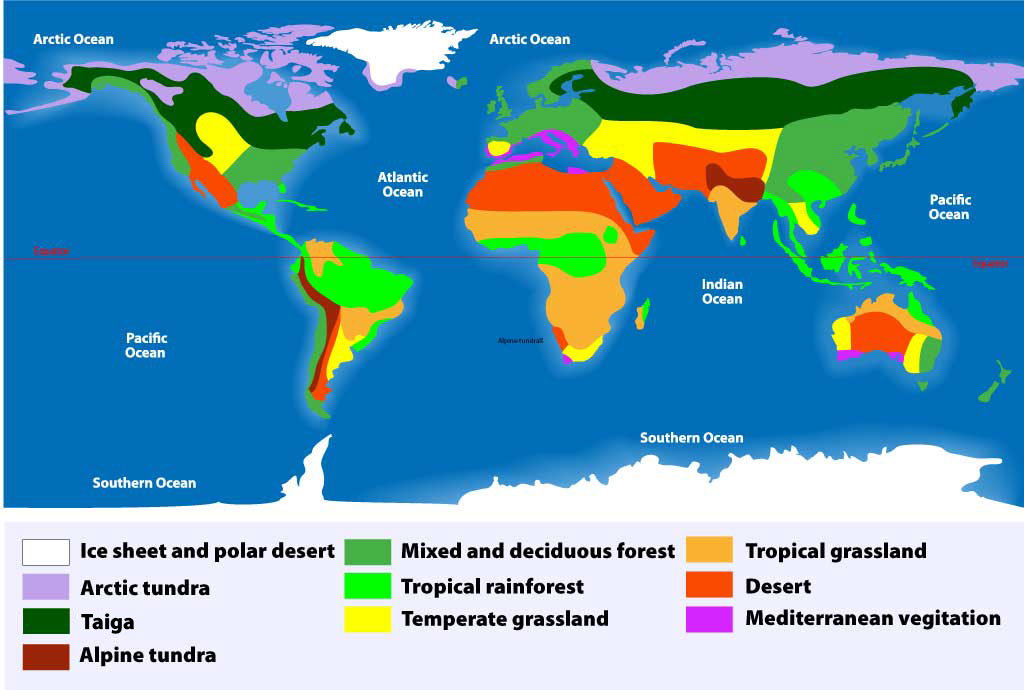Let's investigate
The four main terrestrial biomes contain smaller, more specific variations of each biome. In this lab you will explore ten of these categories and compare some of their defining abiotic characteristics.
Before you begin, click the Activity button below to download your assignment worksheet. When you have completed the assignment, submit it to your teacher.
Arid Desert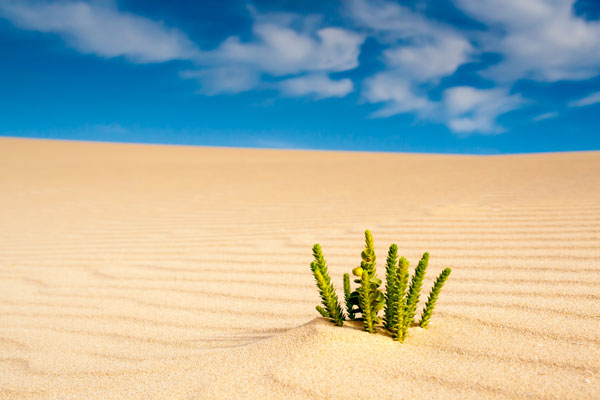
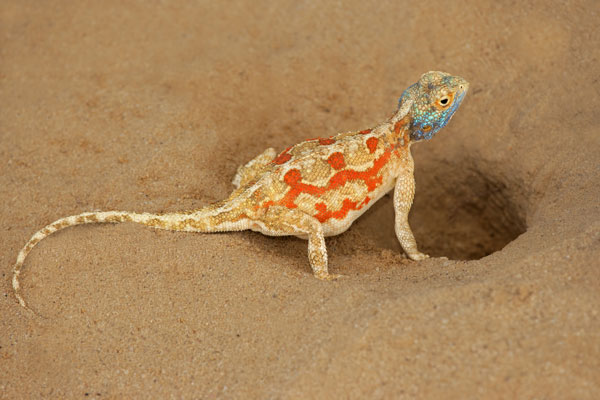
Arid desert biomes are located mostly near the Equator and receive very little precipitation. The few plants that live here are typically low-lying and store water and nutrients in the leaves and stems for survival. The constant hot and dry climate of the arid desert limits the amount of animal life to a few species that stay cool in burrows during the day, coming out only at night. Coastal Desert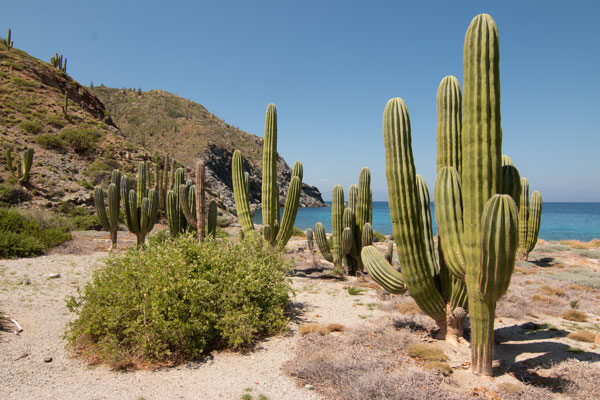
Coastal deserts are located where land meets the ocean. Although fog is carried in by ocean winds, it quickly disappears in the heat of the sun. Although these areas receive very little rainfall, a relatively diverse amount of native plant life can exist. The number of different species of animals is limited, however. Polar Desert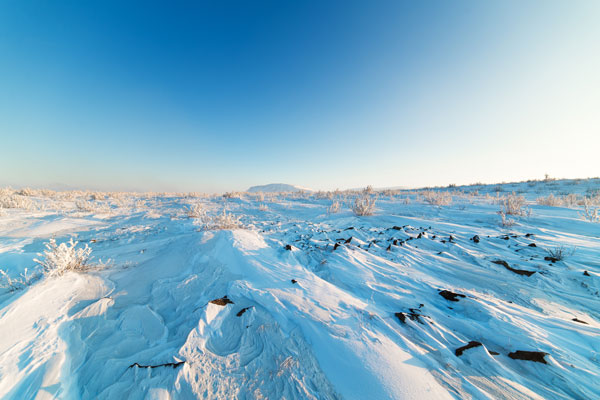
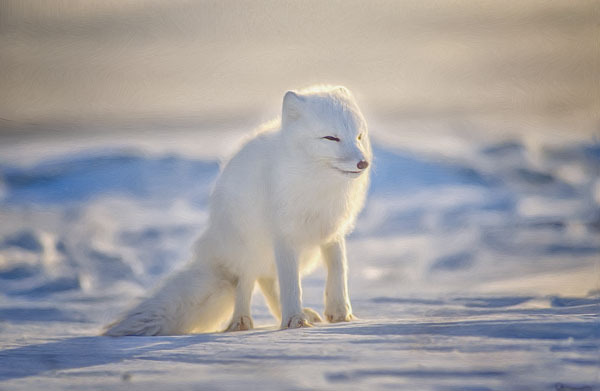
Also known as cold deserts, polar deserts are extremely cold and dry flat plains featuring snow dunes and icebergs. The small amount of precipitation here occurs as snow or fog. Few species of life are found in polar deserts and include some shrubs, polar bears, and the arctic fox. Alpine Tundra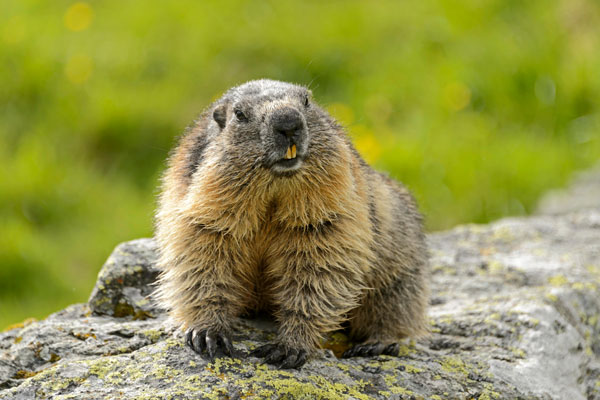
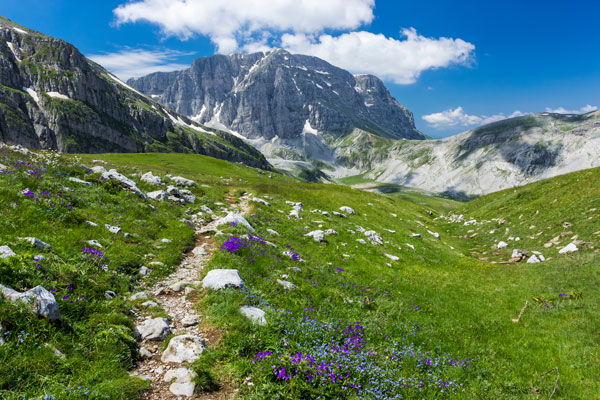
Alpine tundras are located in elevations over 11,000 feet in mountainous areas worldwide. Known as the “land above the trees,” these areas feature strong, gusty, drying winds and cold temperatures. Because of the high elevation and cold temperatures, these tundras are relatively treeless and spend most of the year covered in snow. The few organisms that reside here are small plants, like mosses and grasses, and a few year-round animals, like the marmot. Arctic Tundra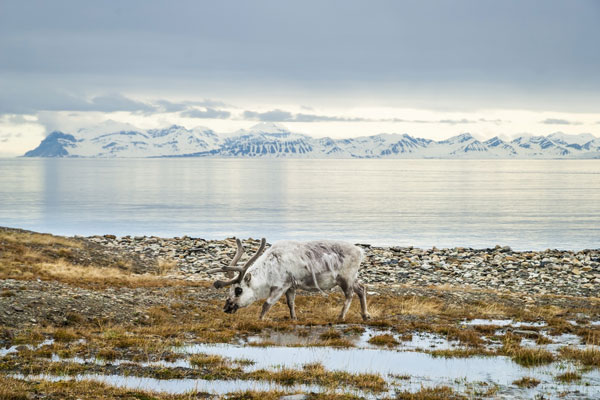
Arctic tundras are found in the higher latitudes of North America. These cold areas are characterized by permafrost, or frozen soil, year-round; harsh, drying winds; and very little precipitation in the form of snow. Plant life is limited to low-lying grasses and moss by low temperatures during the summer growing season, and many of the few animals here are migratory. Temperate Grassland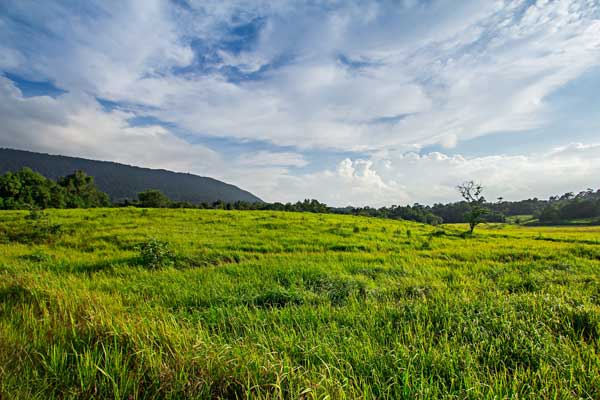
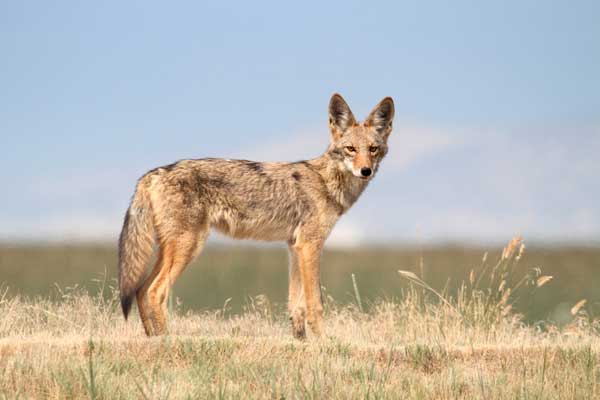
Temperate grasslands exist between forests and deserts, with enough precipitation to sustain mostly species of grasses and flowering plants. The mid-continental areas are warm to hot in the summer and cool to cold in the winter, and they experience a good amount of wind. A moderate number of species of grazers, carnivores, and small animals like mice and snakes make these grasslands their home. Tropical Grassland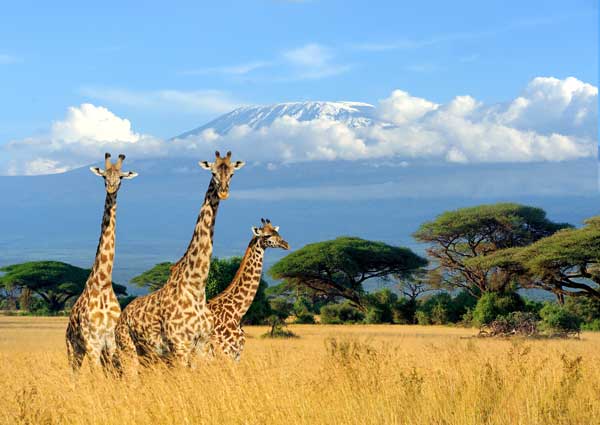
Tropical grasslands feature hot year-round temperatures. They are relatively dry for part of the year; then they experience a heavy rainy season. The terrain is covered with grasses and shrubs, and can have up to 40% tree coverage, depending on the amount of rainfall. Many different species of animals inhabit these grasslands, including zebras, lions, and giraffes. Taiga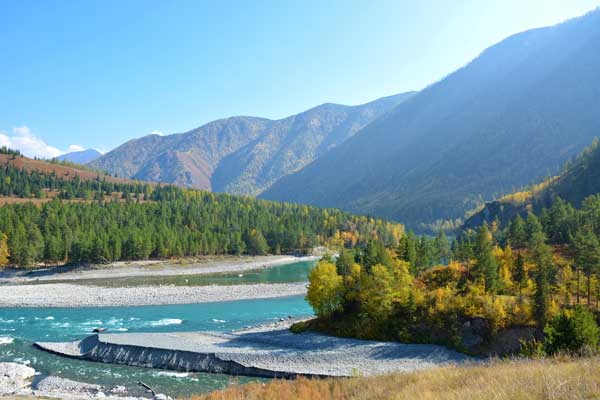
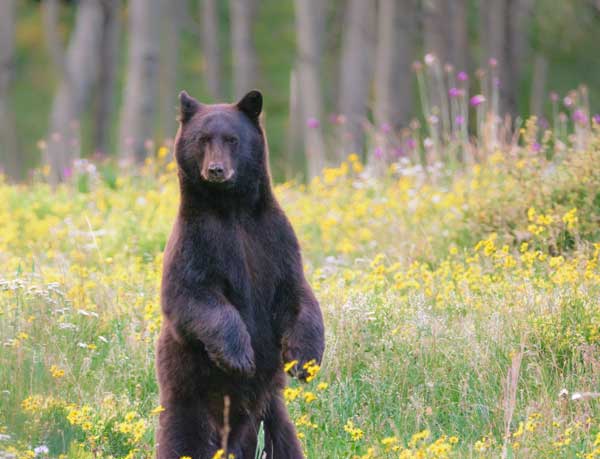
The taiga is the largest biome on Earth and is characterized by cold winters and warm, rainy, and humid summers, with very brief autumn and spring. Located in latitudes just below the Arctic tundra, the taiga is home to a variety of conifer trees and some animals that hibernate or migrate during the winter months. Temperate Forest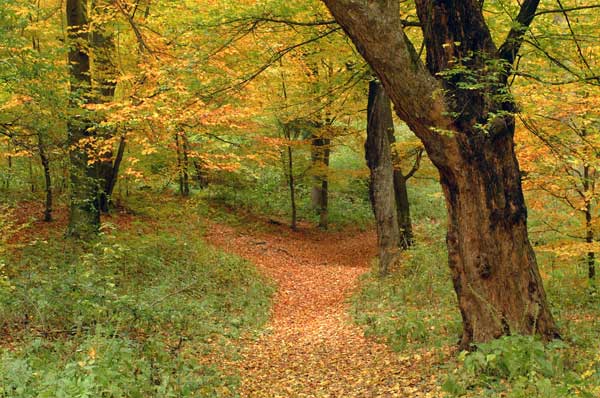

Located between the taiga and the tropics, temperate forests wrap both of Earth’s hemispheres like a belt. Second only to tropical rainforests, these areas receive a good amount of year-round rainfall. Home to deciduous trees that lose their leaves in the winter, temperate forests feature many different species of plants and animals and experience all four seasons. Temperate forests are home to a moderate variety of animals, including foxes, squirrels, snakes, and insects. Tropical Rainforest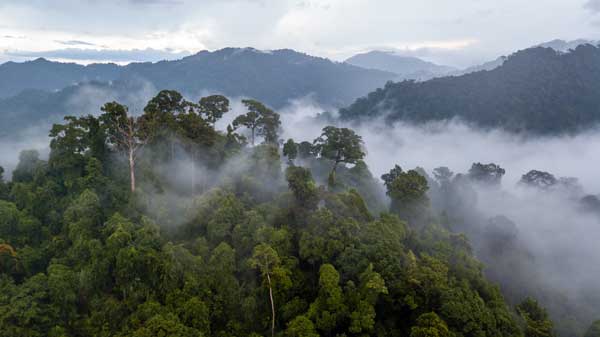

Covering under 3% of Earth’s land surface, tropical rainforests are home to over half of Earth’s land species and are the most biodiverse biomes on the planet. Located along the Equator, rainforests have high year-round temperatures and rainfall and are home to countless varieties of plants, animals, and fungi. |
|
